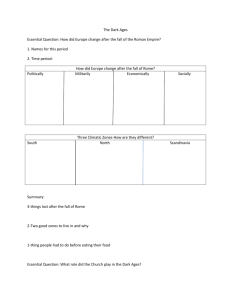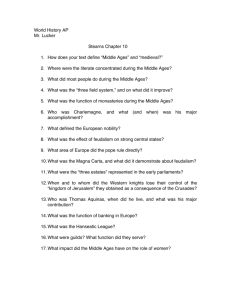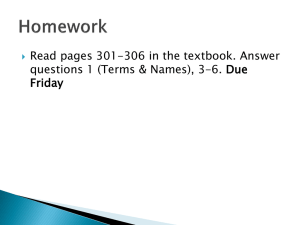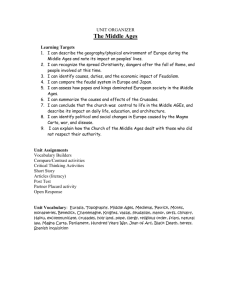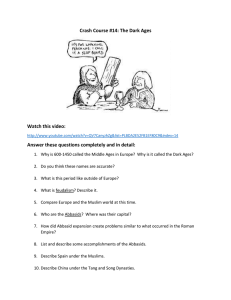The Middle Ages
advertisement
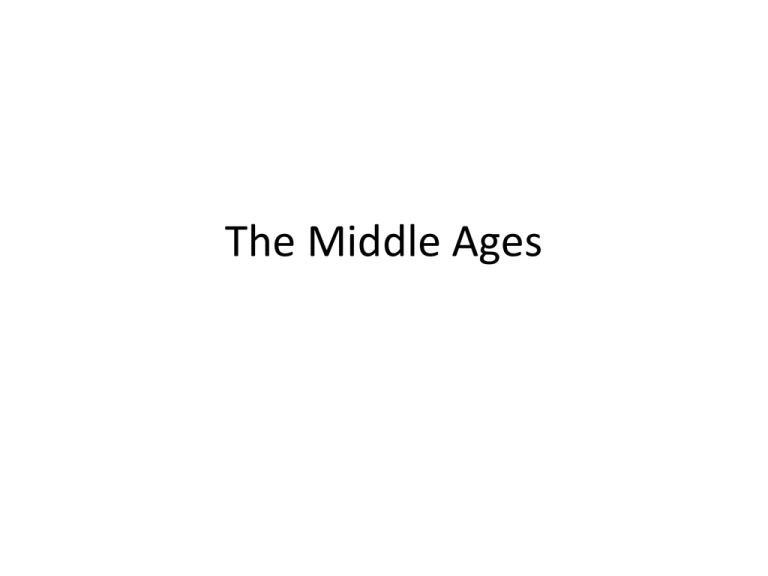
The Middle Ages Agenda 1. Bell Ringer: Why would religion be a dominant force after the fall of the Roman Empire? 2. Brief Lecture: The Middle Ages 3. Video Clip: Clovis 4. Video Clip: Charlemagne 5. Feudal System Chart and Analysis. 6. Discussion: The Church and Feudalism 7. Test outline and Review Guide. Early Middle Ages • These are the Dark Ages • Little literature, or technological advancement is occurring. • Everyone is invading and pillaging. • Germanic Tribes carved up the Roman Empire, and 489, Clovis converts people to Christianity. Feudalism • Violence from tribes led to local lords controlling land and offering protection. • Lords -> Vassals • Granted a fief – real estate • The lord protects vassal, while the vassal pledges loyalty to the lord. High Middle Ages: England • William of Normandy enters in 1066, establishes a strong, central monarchy. • Under Henry II, Common law replaces individual codes. – Wanted to punish Clergy. – Thomas Becket murdered in the process. • Magna Carta signed in 1215 under King John (overuse of powers) • Parliament developed under Edward I, begins an era of collaboration and conflict. High Middle Ages: France • Hugh Capet takes over after the Caroligian rulers. – Not very powerful. – Takes over 100 years to develop a central monarchy. • A Royal bureaucracy develops in the 13th Century. • First meeting of the Estates-General in 1302, the last would be 1789… Religion in the High Middle Ages • Catholic Church reaches the height of their power in the High Middle Ages. – They could influence royal families with papal sacraments. • Sacraments also made the Church an integral part of people’s lives. • Architecture expands on the idea of the light of God. Gothic Cathedrals.
